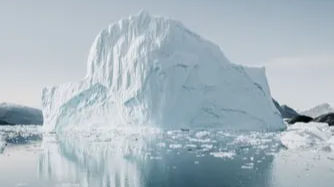The highest
point of the Greenland ice sheet saw rain last week for the first time on
record, in yet another indication of warming for the ice sheet which is already
melting at an alarming rate, scientists say. This was also the heaviest
rainfall that the ice sheet has seen since 1950, when the records began.
Also Read | Lancet study details risks of extreme heat on human health, combat measures
Rain on the
ice sheet is extremely concerning for scientists studying changes in climate
due to global warming. This is because water is not only warmer than water, but
also darker. As a result, it absorbs more sunlight, causing further melting of
the ice sheet. “This is not a healthy sign for an ice sheet,” Indrani Das, a
glaciologist at the Lamont-Doherty Earth Observatory at Columbia University
told The Hindu.
Why is
this important?
Greenland’s
ice sheet is the world’s second largest after Antarctica’s. The melting of the
ice sheet has caused nearly 25% of the total rise in sea levels reported over
the last decade. As global temperatures rise, this share is expected to grow
further.
Also Read | Lake Mead, largest US reservoir, declares water shortage
On August
14, the summit of Greenland’s ice sheet saw rain for several hours. Between
August 14 and August 16, nearly 7 billion tonnes of rain fail on Greenland.
Rain and high temperatures led to extensive melting across the island. The island
saw a massive loss of ice on August 15, nearly seven times more than usual.
Also Read | July 2021 was the world’s hottest month
Temperatures
at the ice cap would never really rise above freezing points. But now, that has
happened thrice in less than a decade. According to scientists at the US
National Snow and Ice Data Center, temperatures at Greenland’s ice sheet
remained above freezing for nine hours.
Scientists
saw this coming
Climate
scientists say that the record-breaking rains are the latest in a series of
warning signs. Greenland saw a massive melting event in late July when ice melted
in such quantities that could cover the state of Florida in the United States
in two inches of water. The melting event as well as last week’s rain were
caused by air circulation patters which meant warm, moist air temporarily
covered the island.







